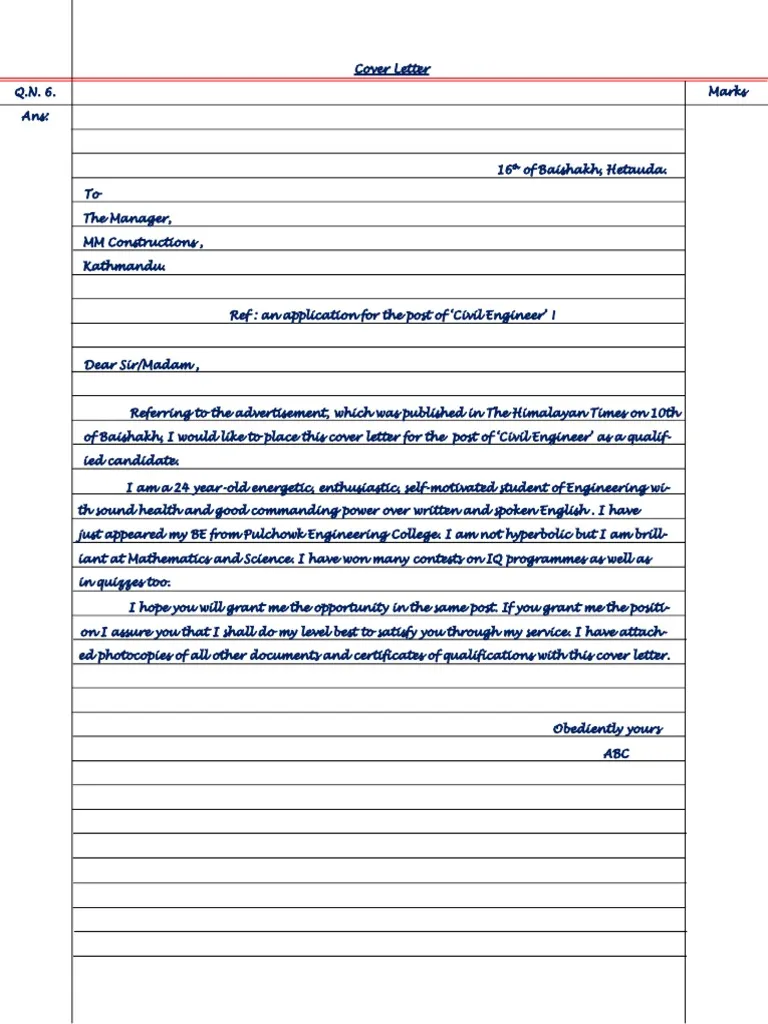What is a Cover Letter Understanding the Basics
A cover letter is a crucial document that accompanies your resume when applying for a job. It serves as a personalized introduction, allowing you to elaborate on your qualifications, skills, and experiences in a way that a resume alone cannot. Think of it as your opportunity to make a strong first impression and convince the hiring manager that you are the perfect fit for the role. A well-crafted cover letter can significantly increase your chances of getting an interview, as it provides context and demonstrates your genuine interest in the position and the company. This guide will provide you with a comprehensive understanding of how to write an effective cover letter.
Defining the Purpose of a Cover Letter
The primary purpose of a cover letter is to introduce you to a potential employer and highlight why you are the ideal candidate for a specific job. It allows you to go beyond the bullet points of your resume and provide a narrative that showcases your relevant skills, experiences, and personality. By clearly articulating your career goals and demonstrating your understanding of the company’s needs, you can make a compelling case for why you deserve an interview. The cover letter also helps you to express your enthusiasm for the opportunity and to demonstrate your research into the company and the role.
Highlighting Key Skills and Experiences
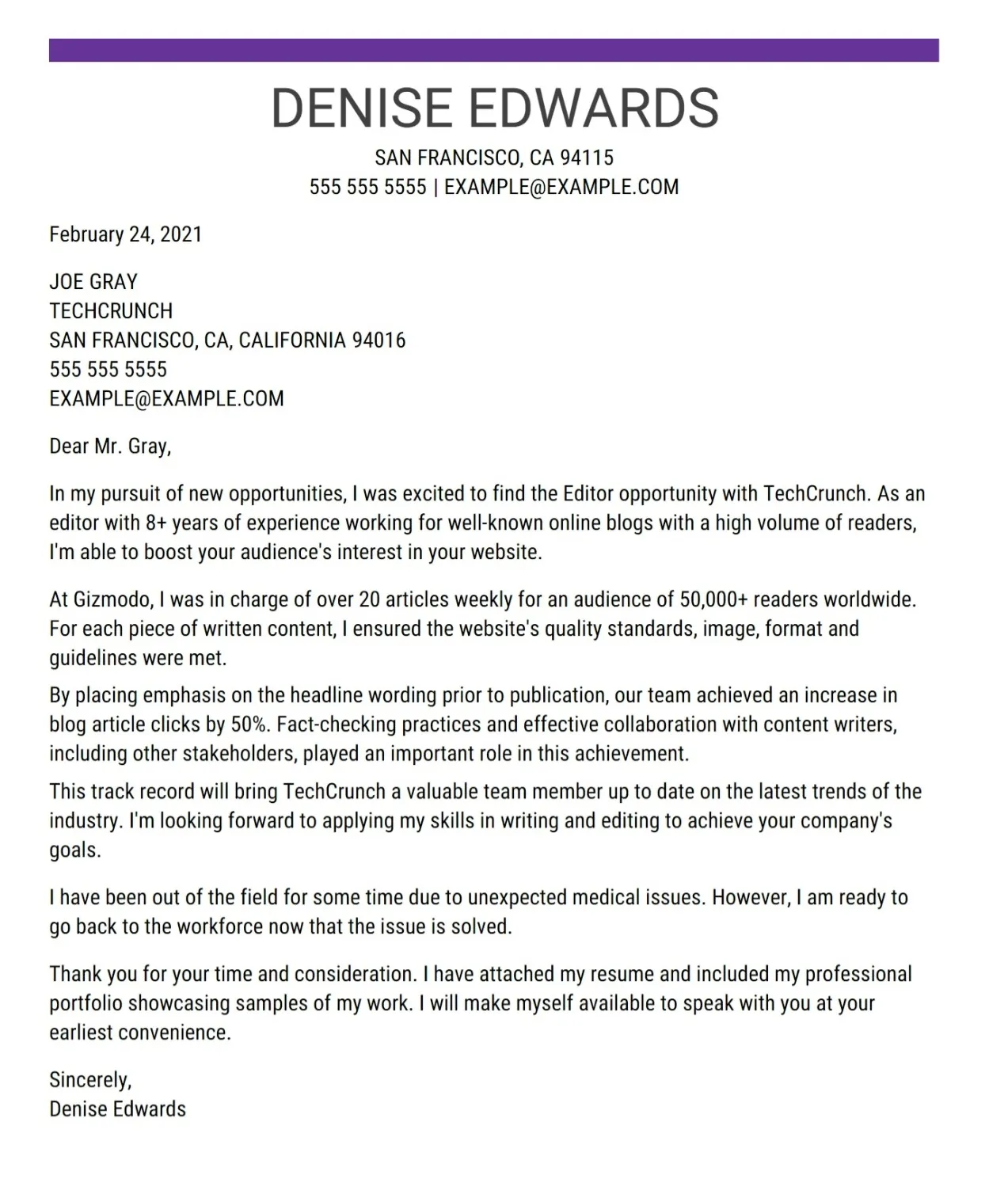
A cover letter gives you the space to highlight your key skills and experiences in a way that is tailored to the specific job requirements. Carefully review the job description and identify the skills and qualifications that the employer is seeking. Then, use the cover letter to provide specific examples of how you have demonstrated those skills in previous roles or projects. Quantify your achievements whenever possible, using numbers and data to showcase your impact. This will help you to stand out from other applicants and demonstrate the value you can bring to the company. Ensure your key skills and experiences align with the job description and that you provide clear, concise examples. This is your opportunity to connect the dots between your background and the job’s needs.
Key Components of a Cover Letter
A well-structured cover letter typically includes several key components that work together to present a compelling case for your candidacy. Understanding these components is crucial for creating an effective cover letter that captures the hiring manager’s attention. Each section serves a specific purpose and contributes to the overall impact of your letter. By carefully crafting each part, you can ensure your cover letter effectively communicates your qualifications and enthusiasm for the job.
Contact Information and Formatting
Start your cover letter by including your contact information at the top, including your name, address, phone number, and email address. This ensures the hiring manager can easily reach you. The format should be professional, such as left-aligned or centered. Use a clear, easy-to-read font like Times New Roman, Arial, or Calibri, and maintain a consistent font size (typically 11 or 12 points). Use single-spacing within paragraphs and double-spacing between paragraphs to improve readability. Address the letter to the hiring manager or the appropriate contact person, using their name if possible. This attention to detail shows professionalism and respect.
The Opening Paragraph Grabbing Attention
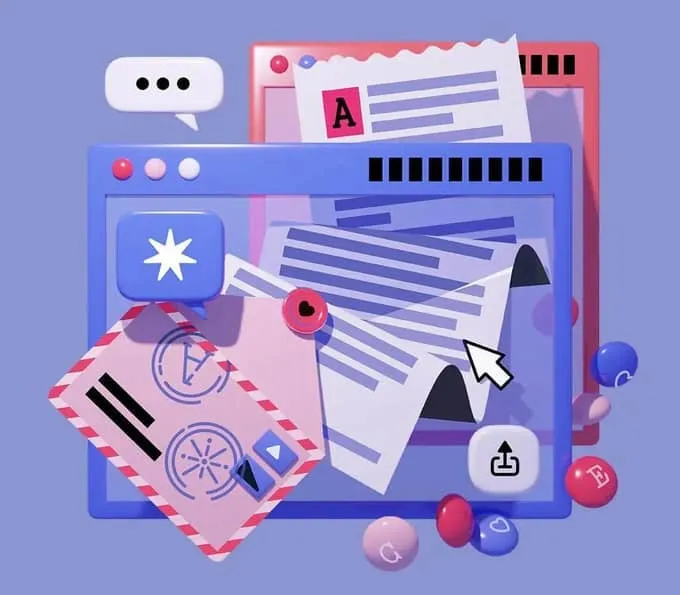
The opening paragraph is your chance to make a strong first impression and grab the hiring manager’s attention. Start with a compelling hook that highlights your enthusiasm for the position or the company. State the position you are applying for and where you saw the job posting. Briefly mention how your skills and experiences align with the job requirements. Avoid generic phrases like “I am writing to express my interest…” Instead, express your genuine interest in the role and the company, and consider mentioning something specific that attracted you to the opportunity. This will set a positive tone and encourage the reader to continue reading.
Body Paragraphs Showcasing Your Value
The body paragraphs are where you showcase your value and demonstrate how your skills and experiences align with the job requirements. Use these paragraphs to elaborate on the key skills and qualifications mentioned in the job description. Provide specific examples of your accomplishments and how you have used your skills to achieve positive results in previous roles. Quantify your achievements whenever possible by using numbers, data, and metrics to illustrate your impact. Tailor your content to the specific job and highlight the most relevant information. It’s also a good idea to explain why you are a good fit for the company’s culture and values, demonstrating your enthusiasm and commitment.
Closing Paragraph Call to Action
The closing paragraph should reiterate your interest in the position and summarize why you are a strong candidate. Reiterate your key qualifications and express your enthusiasm for the opportunity to contribute to the company’s success. Include a clear call to action, such as requesting an interview and providing your contact information. Thank the hiring manager for their time and consideration. Avoid generic closing statements like “Thank you for your time.” Instead, make a proactive statement, expressing your eagerness to learn more and discuss your qualifications. Ensure your closing is professional and leaves a positive final impression.
Writing a Compelling Cover Letter Best Practices

Writing a compelling cover letter involves more than just listing your qualifications. It requires a strategic approach that combines clear communication, personalization, and a strong understanding of the job requirements. By following these best practices, you can create a cover letter that captures the hiring manager’s attention and significantly increases your chances of getting an interview.
Tailoring to the Specific Job
One of the most important best practices is to tailor your cover letter to each specific job you apply for. Avoid sending generic cover letters, as they rarely impress hiring managers. Review the job description carefully and identify the key requirements and qualifications. Then, use your cover letter to highlight the skills and experiences that are most relevant to the position. Customize the language and examples to reflect the specific needs of the role and the company. Research the company and demonstrate your understanding of their mission, values, and goals. Tailoring your letter shows the hiring manager that you are genuinely interested in the opportunity and have taken the time to understand their needs.
Using Keywords Strategically
Incorporate relevant keywords from the job description into your cover letter. This helps to ensure your application is noticed by applicant tracking systems (ATS), which many companies use to screen resumes and cover letters. However, don’t stuff your letter with keywords; instead, use them naturally within the context of your writing. Review the job description and identify the key skills and qualifications that the employer is looking for. Then, weave those keywords into your description of your experience and accomplishments. This will help the hiring manager quickly identify your relevant skills and experience. Prioritize the most important keywords and use them in a way that demonstrates your understanding of the job and the company.
Showcasing Your Personality and Enthusiasm
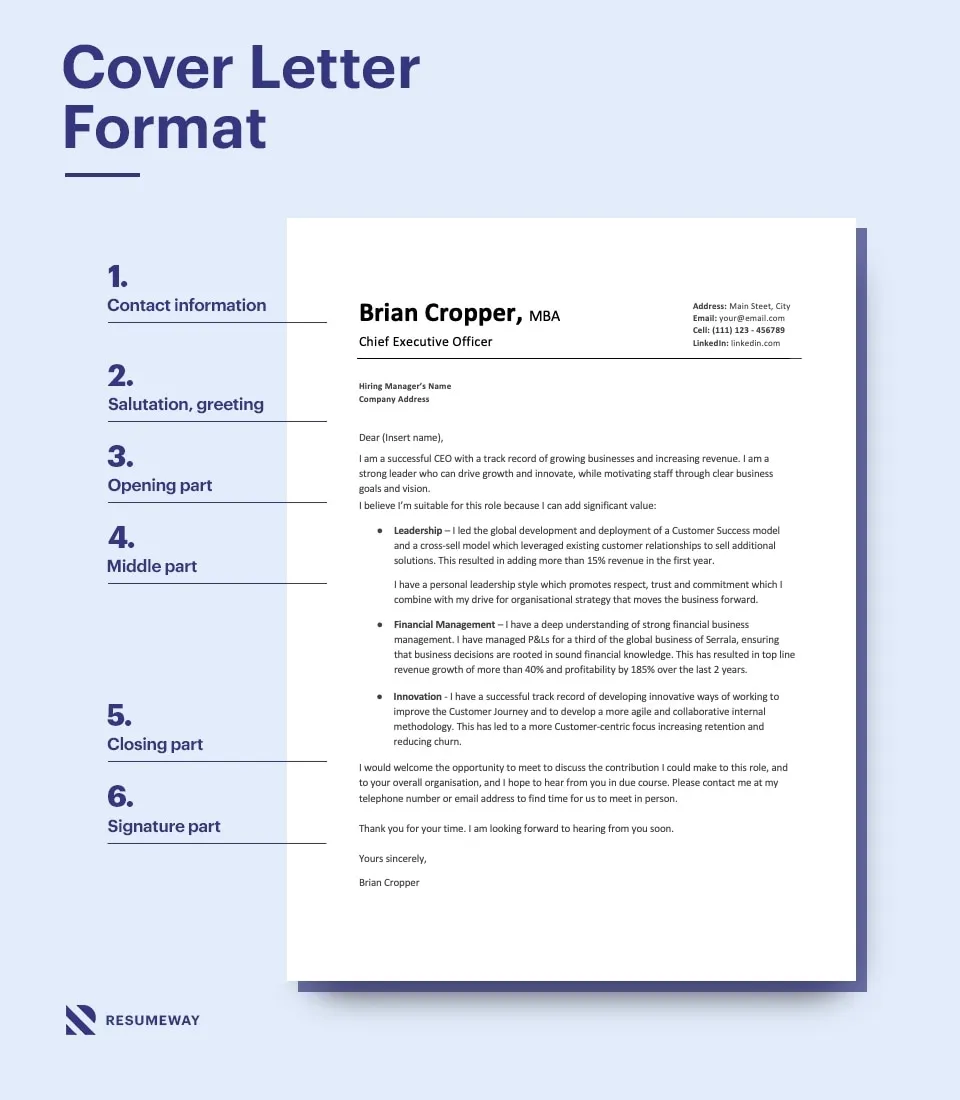
While professionalism is essential, your cover letter is also an opportunity to showcase your personality and enthusiasm. Let your passion for the role and the company shine through. Use a confident and engaging tone, and avoid sounding overly formal or robotic. Share your genuine interest in the opportunity and explain why you are excited about the prospect of joining the company. Demonstrate your understanding of the company’s culture and values, and explain how your skills and experience align with their goals. Injecting a touch of personality will make your cover letter more memorable and help you stand out from other applicants. This is your chance to make the hiring manager want to meet you.
Common Mistakes to Avoid
Avoiding common mistakes can significantly improve the effectiveness of your cover letter. Be aware of the pitfalls that can undermine your application and take steps to ensure your letter is polished and professional. Addressing these common issues can help you make a positive impression and increase your chances of getting an interview.
Generic Letters and Lack of Personalization
One of the biggest mistakes is sending a generic cover letter that is not tailored to the specific job or company. Hiring managers can easily spot a generic letter, and it can create the impression that you are not genuinely interested in the opportunity. Take the time to research the company and the role. Tailor your letter to reflect the specific requirements and demonstrate your understanding of their needs. Avoid using generic phrases and instead, personalize your content to make it clear that you have taken the time to understand the company and the position. Highlight the skills and experiences that are most relevant to the job requirements.
Typos and Grammatical Errors
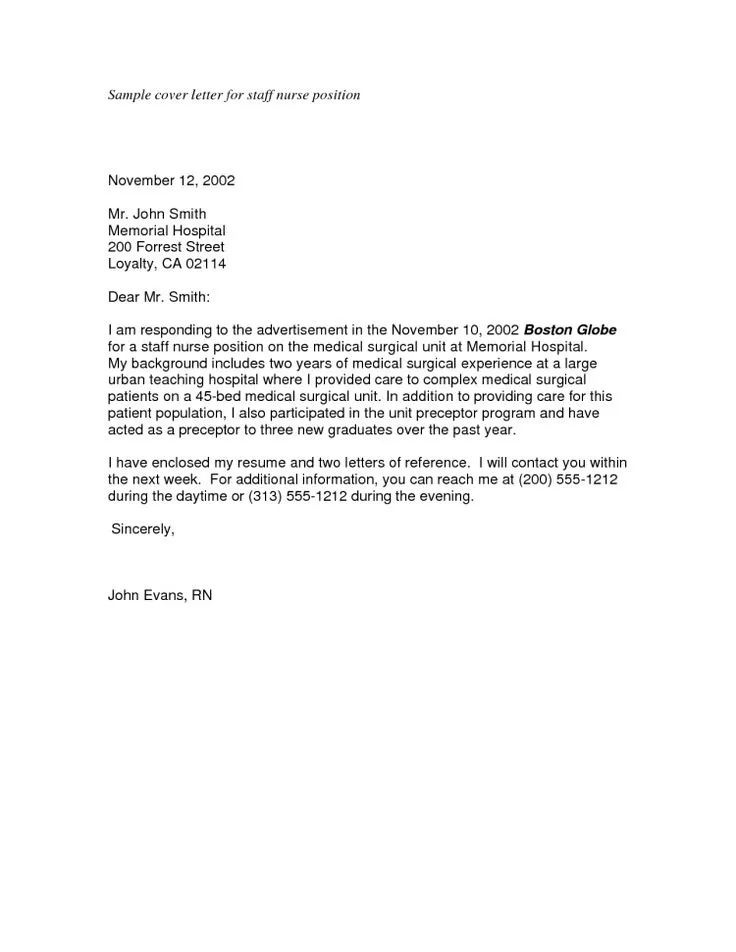
Typos and grammatical errors can damage your credibility and undermine your professionalism. Proofread your cover letter carefully before submitting it. Use a grammar checker to catch any errors you might have missed. Ask a friend or family member to review your letter as a second set of eyes. Errors in grammar, spelling, and punctuation can create the impression that you lack attention to detail. A polished cover letter demonstrates your commitment to quality and your respect for the hiring manager. Take the time to review and revise your letter until it is error-free.
Ignoring the Job Description
Failing to address the specific requirements outlined in the job description is another common mistake. The job description provides the employer’s expectations and what they are looking for in a candidate. Carefully review the job description and highlight the skills and experiences that match the requirements. Make sure your cover letter clearly demonstrates how your qualifications align with what the employer is seeking. By addressing the job description’s requirements directly, you demonstrate your understanding of the role and your ability to meet the company’s needs. Ignoring these details makes it difficult for the hiring manager to see how you fit the role.
The Importance of Proofreading and Editing
Proofreading and editing are critical steps in the cover letter writing process. A well-written cover letter that is free of errors will make a strong impression on the hiring manager. Take the time to review your letter for any mistakes in grammar, spelling, and punctuation. Read your letter aloud to catch any awkward phrasing or unclear sentences. Asking a friend or family member to proofread your letter can also be beneficial. A polished and professional cover letter will significantly improve your chances of getting an interview.
